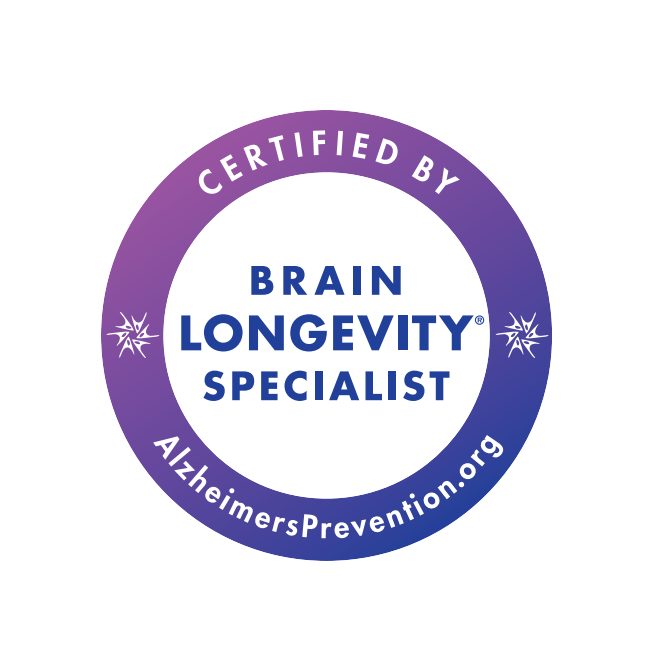
What is the MIND Diet…
The MIND Diet was developed to prevent a form of dementia known as Alzheimer’s Disease by Rush University. The first peer-reviewed article regarding its performance was published in 2015 and it has been studied by researchers ever since. It is a combination of the well-known Mediterranean diet and the low-sodium DASH diet (Mediterranean-DASH Intervention for Neurodegenerative Delay), or MIND. See what they did there? It emphasizes nine foods that are known to be especially brain healthy, and recommends moderate or rare consumption of five foods that are not so helpful for brain health. The MIND Diet does not discuss calorie counts, maximum serving sizes, or anything else related to weight control/loss. It is a diet in the broader sense of the word, that 80-90% of what you eat in a day should fall into the recommendations. Speaking of recommendations, here they are:
MIND Diet Brain-Healthy Foods
| Food | Servings | Serving Size | Examples |
|---|---|---|---|
| Leafy Green Vegetables | 6+ servings per week | 1 cup raw, or 1/2 cup cooked | Spinach, kale, arugula, Swiss chard, romaine lettuce, leaf lettuce, collard greens, lettuces, herbs, root veggie tops |
| Other Vegetables | 1+ servings every day | 1 cup raw, or 1/2 cup cooked | Mushrooms, cruciferous (broccoli, cabbage, cauliflower, Brussels sprouts), alliums (onions, garlic, shallots), colorful (sweet potatoes, carrots, radishes, beets, turnips, potatoes, peppers) |
| Whole grains | 3+ servings every day | 1/2 cup | Oats, farro, brown/black/red/wild rice, whole wheat flour, whole grain products (bread, pasta, etc.), bulgur, quinoa, barley, whole grain corn (including flour, meal, popcorn) |
| Nuts and seeds | 5+ servings per week | 1 ounce nuts or seeds, or 2 tablespoons nut or seed butter | Walnuts, almonds, pistachios, cashews, hazelnuts, pecans, macadamia nuts, peanuts, pine nuts, sesame seeds, flax seeds, chia seeds, pumpkin seeds, sunflower seeds, all-natural nut and seed butters (almond butter, tahini, sun butter, etc.) |
| Beans and legumes | 4+ servings per week | 1/2 cup cooked/canned | Black beans, chickpeas/garbanzo beans, kidney beans, cannellini beans, lentils, edamame, great northern beans, pinto beans, lima beans, split peas, tofu, tempeh |
| Berries | 2+ servings per week | 1/2 cup | Blueberries, strawberries, blackberries, raspberries, grapes, cranberries |
| Poultry | 2+ servings per week | 3 ounces cooked (about the size of a deck of cards) | Boneless skinless chicken breasts, boneless skinless chicken thighs, lean ground chicken, lean ground turkey, turkey breast |
| Fish and seafood | 1+ servings per week | 3 ounces cooked (about the size of a deck of cards) | Salmon, cod, sardines, mackerel, tuna, trout, arctic char, shrimp, scallops, mussels, oysters, clams, crab, tilapia, halibut |
| Extra virgin olive oil | Daily | Use as primary cooking oil | May use avocado oil for neutral flavor and high-heat applications (baking, pan-frying, etc.) |
One of the things I love about the MIND Diet is that it was designed to be sustainable and enjoyable. No foods are off limits, but it is recommended you enjoy the following foods occasionally:
MIND Diet Occasional Foods
| Food | Servings | Serving Size | Examples |
|---|---|---|---|
| Butter | 1 serving or less per day | 1 tablespoon | Stick or tub form |
| Pastries and sweets | 5 servings or less per week | Cookie: 2 small; ice cream: 1/2 cup; cake/brownie: 1 3-inch square; pastry: 1 small | Donut, cookie, ice cream, cake, candy, brownie, pie |
| Red meat | 3 servings or less per week | 3 ounces cooked (about the size of a deck of cards) | Beef, pork, lamb, bison, game meats Note: try to choose unprocessed red meats for regular consumption and avoid processed meats (hot dogs, bacon, sausage, etc.) |
| Cheese | 2 servings or less per week | 1 ounce of cheese or 2 tablespoons shredded cheese | Cheddar, mozzarella, provolone, Parmesan, feta, ricotta |
| Fried or fast foods | 1 serving or less per week | Fried chicken/fish: 4 ounces; hamburger: 1/4-pound patty; Fries: 12-15 | French fries, hamburgers, chicken nuggets/tenders, fried fish, fried chicken |
For a printable PDF version of the MIND Diet guidelines, click this link:
…and why should I care?
This factsheet from the Alzheimer’s Associate does a great job breaking down the situation we are in now. Here’s what stands out to me: 1 in 5 women are at risk of developing Alzheimer’s by the time they are 45 years old, along with 1 in 10 men. Over 11 million Americans provide unpaid care for loved ones with Alzheimer’s and other forms of dementia. I have seen how brutal it is to live with dementia, and I have seen how emotionally and physically difficult it is to take care of someone with dementia. I want to do everything in my power to prevent that future for myself, and for my family.
Having a family history of Alzheimer’s or another form of dementia does increase your risk of developing the disease, but so do many other lifestyle risk factors, including heart disease, diabetes, brain injury, smoking, and excessive drinking. Anyone can be at risk of developing these conditions, not just those of us with family history.
The bad news about Alzheimer’s and other forms of dementia is that they can take decades to form and are influenced by a multitude of genetic, environmental, and lifestyle factors. But that’s also the good news – there are many areas where we can intervene to try to prevent Alzheimer’s. Because of its focus on foods known to promote brain health and function, the MIND Diet is one of many powerful methods to reduce the risk of developing Alzheimer’s later in life. In a four-and-a-half-year study, participants who closely followed the MIND Diet guidelines showed a whopping 53% fewer cases of Alzheimer’s; those who followed it about half the time showed a 35% reduction. This was independent of other lifestyle factors and health conditions, which shows the huge role nutrition plays in brain health. In other words:
No drug, supplement or lifestyle intervention has ever been proven to slow down brain aging to the degree of the MIND diet.
Annie Fenn, MD
The study participants who closely followed the guidelines also showed an improvement in their cognitive function. Not only do these recommendations help stave off Alzheimer’s down the road, but they can also improve cognition here and now.
It’s important to note how short-term the study length was compared to the decades it typically takes Alzheimer’s to form, and that these study participants were already 65 years or older when the study was performed. Is incorporating this dietary pattern in your 20’s, 30’s, or 40’s, before the Alzheimer’s disease process gets started, even more effective? Researchers have not yet studied this, and although I am eagerly awaiting that data, I am not waiting around to get started. Join me on this journey and let’s walk this path together.

Sources:
- The Brain Health Kitchen by Annie Fenn, MD
- MIND Diet For Beginners by Kelli McGrane, MS, RD
- Diet Review: the MIND Diet, Harvard T.H. Chan School of Public Health



Leave a Reply